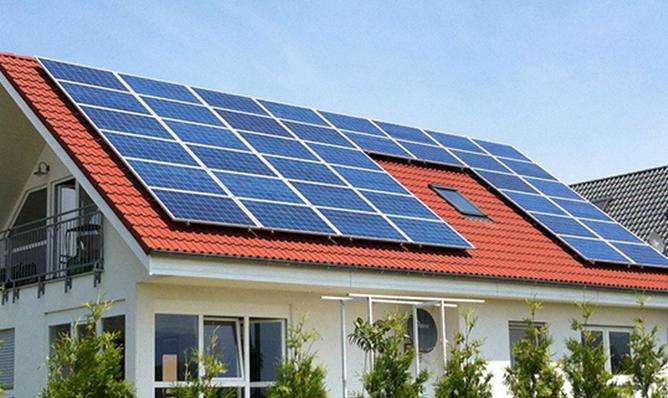To put it simply, it converts light energy into electrical energy. Solar energy is absorbed by the battery panel, which increases the energy of the electrons therein, thus freeing themselves from the constraints of the atomic nucleus and possessing electrical energy. .
Principle of energy production by solar panels:
Solar cells are devices that react to light and can convert light energy into electricity. There are many types of materials that can produce photovoltaic effects, such as: monocrystalline silicon, polycrystalline silicon, amorphous silicon, gallium arsenide, copper selenium indium, etc. Their principles of energy production are basically the same. Now, a crystal is used as an example to describe the photovoltaic energy production process. P-type crystalline silicon can be doped with phosphorus to obtain silicon ofN type, forming a PN junction.
When light shines on the surface of the solar cell, some of the photons are absorbed by the silicon material; the energy of the photons is transferred to the silicon atoms, causing the electrons to migrate and become free electrons. which come together on both sides of the P-N junction to form With the potential difference, when the external circuit is connected, under the action of this voltage, a current will flow through the external circuit to produce a certain output power. The essence of this process is: the process of converting photon energy into electrical energy.
The manufacturing process of crystalline silicon solar cells:
“Silicon” is one of the most abundant materials on our planet. Since scientists discovered the semiconductor properties of crystalline silicon in the 19th century, it has almost alwayst changed, even human thinking. At the end of the 20th century, “silicon” is present everywhere in our lives. Crystalline silicon solar cells have been industrialized most rapidly over the past 15 years. The production process can be roughly divided into five stages: a. Purification process B. Rod drawing process c. Battery manufacturing process e.
Some issues about the production process and equipment of solar panels
The production process of solar panels is not pollution-free. The main sources of pollution are liquid and gaseous waste. According to the request for relevant public information, we learned that the production process of solar cells involves the use of chemicals, mainly HF, hydrochloric acid, isopropyl alcohol, hydrogen peroxide, etc., and that ammonia is also used to emite waste gases. will also cause environmental pollution. Solar panels are devices that absorb sunlight and convert solar radiation energy directly or indirectly into electrical energy by photoelectric effect or photochemical effect. The main material of most solar panels is silicon, but due to its high production cost, it is generally used. still some limitations of use.
Why is phosphosilicate glass removed during solar cell production?
I will try to answer each of the above questions one by one to the best of my ability :
1. "Diffusion oven" As the name suggests, this is an oven used for diffusion in the crystalline silicon solar cell manufacturing industry, it is naturally used for diffusion doping of silicon substrates in order to prepare structsP-N junction ures. As for the thermal oxidation of silicon wafers, it is only an intermediate process in the technological process of diffusion doping. It is designed to improve the stability and uniformity of the diffusion process. However, the thickness of the general oxide layer is extremely thin, which is completely different from the oxidation in the semiconductor wafer process. Therefore, the thermally oxidized silicon wafer is only an intermediate state here and is generally not used as a separate processing unit.Yuan.
2. “Furnace tube” is “TUBE”. Obviously, only tube furnaces are called "tube", while plate furnaces are called "cavities". In addition to diffusion furnaces, PECVD also has tubular equipment, which is basically the same concept as the furnace tube of a diffusion furnace.
——In addition, most domestic PECVDs are tubularres.
Phosphosilicate glass must be removed during the production of solar cells for the following reasons:
Due to the diffusion process in the solar cell manufacturing process, even if a Back-to-back diffusion is used, the phosphor will inevitably spread to all surfaces of the silicon wafer, including the edges. Photogenerated electrons collected on the front side of the PN junction will flow toward the back side of the PN junction along the area where the phosphor is diffused over the edge, causing a short circuit.
During the manufacturing process of solar cells, the chemical etching method is used, that is, the silicon wafer is dipped in a hydrofluoric acid solution to cause a chemical reaction in order to generate a complex soluble hexafluorosilicic acid. layer of phosphosilicate glass formed on the surface of the silicon wafer after bonding by diffusion.














